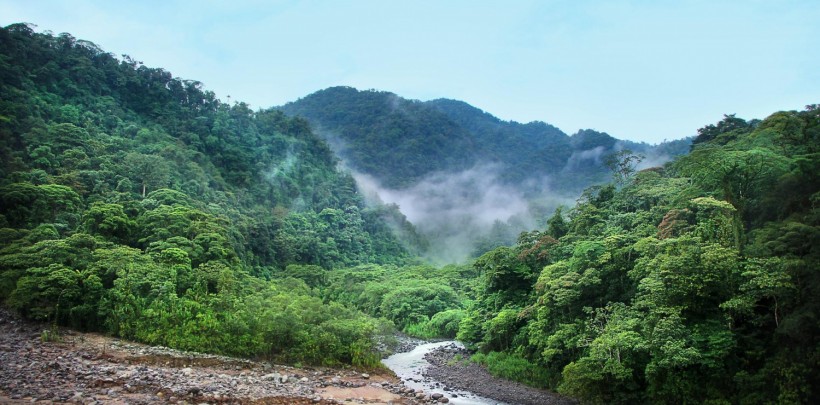Network analysis was used in a recent study, published in the Proceedings of the National Academy of Sciences, led by Nico Wunderling at the Potsdam Institute for Climate Action Research, to identify areas of the Amazon forest that are most at risk of becoming savannah due to ongoing clearing for soy or pasture that causes the weakening of the forest.

Jungle fog trees, green rainforest
The Contagious Effect of Drought in One Amazon Region on the Entire Forest
Due to the South American forest's lack of rain, the Amazon Basin is now more frequently and severely affected by droughts due to climate change. The forest can recycle atmospheric moisture that can produce up to 50% of the rain that falls over the Amazon Basin. Despite its high efficiency, the moisture recycling system ultimately depends on the amount of water initially injected into it.
According to recent findings, even if a dry spell only harms a small portion of the forest, its effects can be felt up to three times farther away. Due to the strong reduction in water recycling volume caused by a lack of rain, nearby regions will also experience a decrease in rainfall, further stressing the forest.
Wunderling said that while investigating the impact of drought, that rule also holds for deforestation. "It means essentially when you chop down one acre of forest, what you actually are destroying is 1.3 acres," he said.
The Long-Term Impact of the Amazon Drought
In a study that was published in Nature, scientists found that dry years will become commonplace in 2050 because the frequent droughts are already causing measurable changes to the moisture network in the Amazon. Henrique Barbosa, the co-senior author of the study and assistant professor of physics at the University of Maryland, Baltimore County, used the observations to understand and model the effects of a future climate resembling a permanent drought state.
It is important to remember that the Amazon's forest systems vary depending on water availability. While some regions experience a distinct dry season, others regularly experience year-round rainfall.
However, in the new climate pattern, the dry season-adapted parts of the forest won't necessarily survive the changes, and there is a high likelihood that they will turn into savannah with no trees at all. The effects on biodiversity would be catastrophic, and the local, regional, and global climate would also suffer.
Big Hope for Amazon's Climate Stability
EurekAlert shared in its post that the co-senior author of the study and director of the Potsdam Institute, Ricarda Winkelmann, said that the tipping elements research has high hopes that there is still much we can do to stabilize the forest.
She claimed that a large portion of the forest is still in comparatively stable conditions and that the network effects of dry spells are probably only felt in a few locations in the southeast and southwest of the forest, which also happen to be the locations where the forest has already experienced damage from human activity.
RELATED ARTICLE: Good News: Brazil's Amazon Rainforest Recorded Reduction in Deforestation on July
Check out more news and information on Environment in Science Times.




![Humans Will Go Extinct on Earth in 250 Million Years; Mass Extinction Will Occur Sooner if Burning Fossil Fuels Continues [Study]](https://1721181113.rsc.cdn77.org/data/thumbs/full/53373/89/56/50/40/humans-will-go-extinct-on-earth-in-250-million-years-mass-extinction-will-occur-sooner-if-burning-fossil-fuels-continues-study.jpeg)









